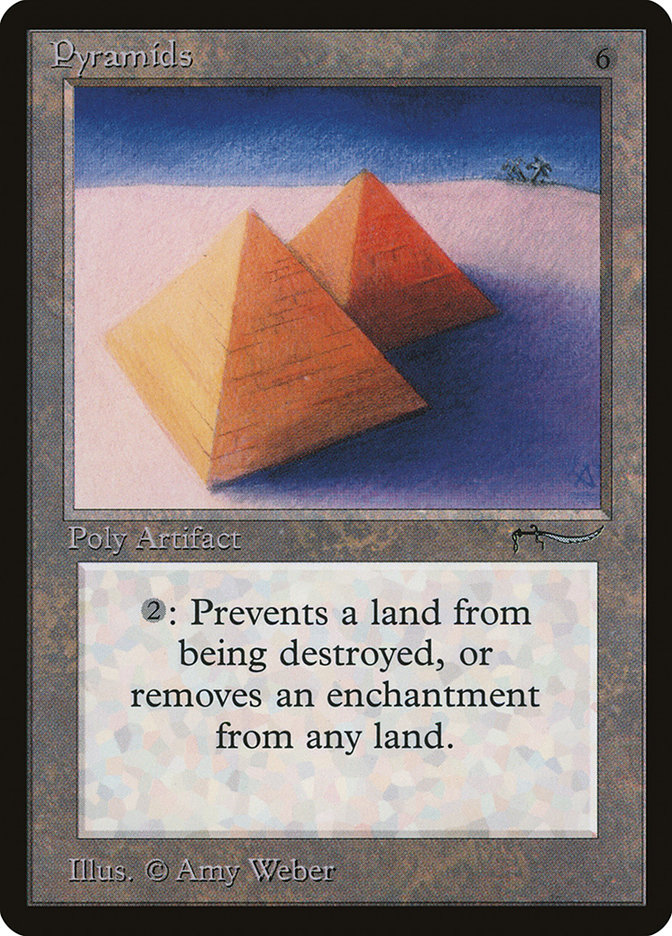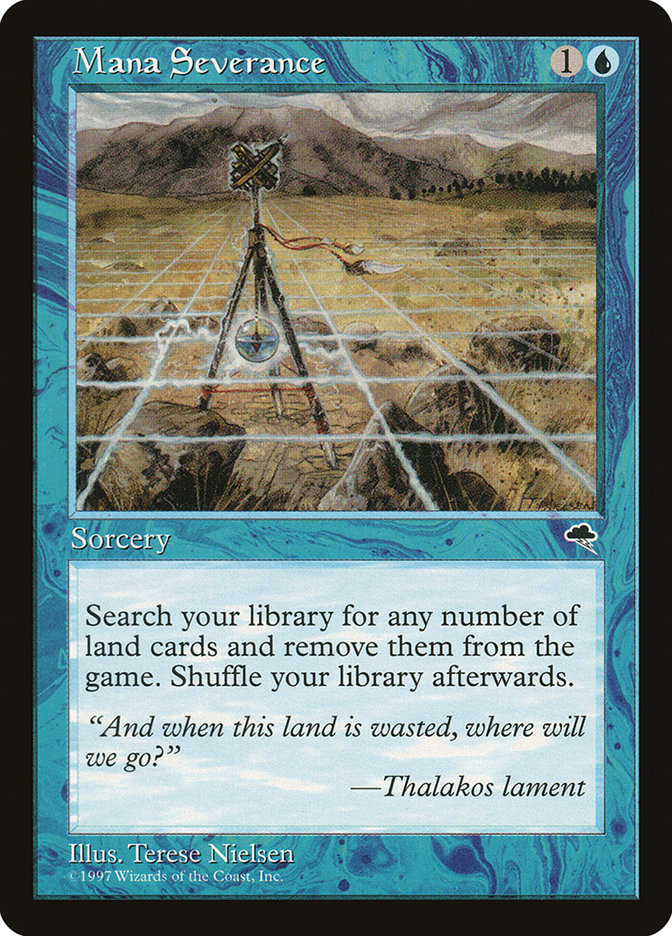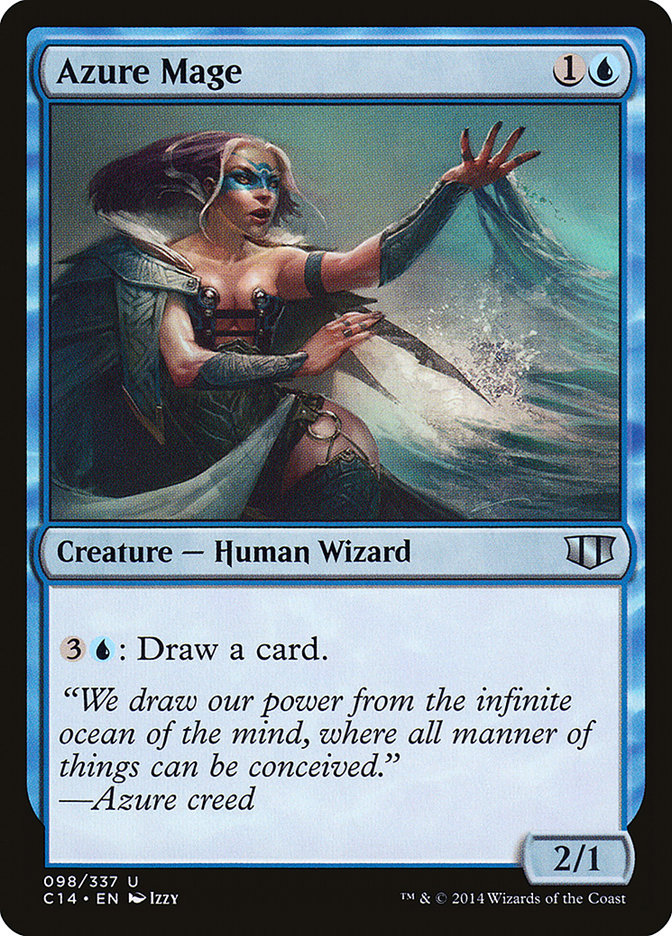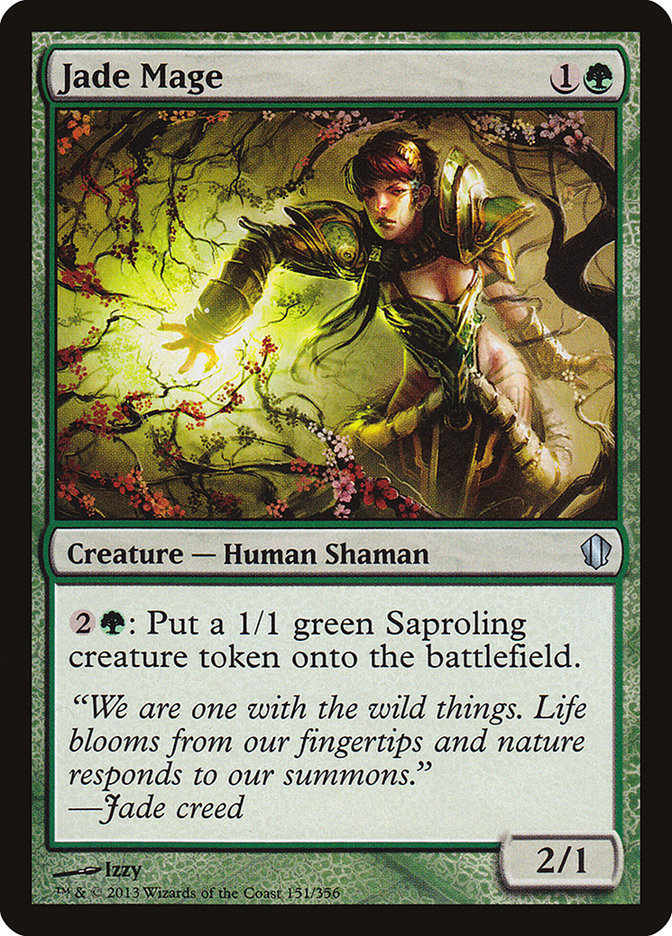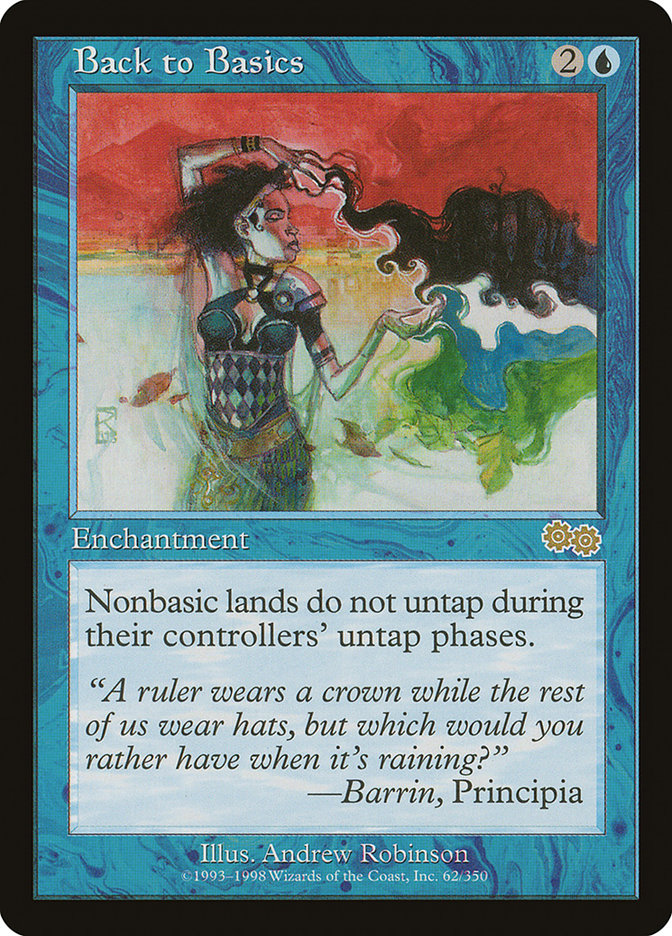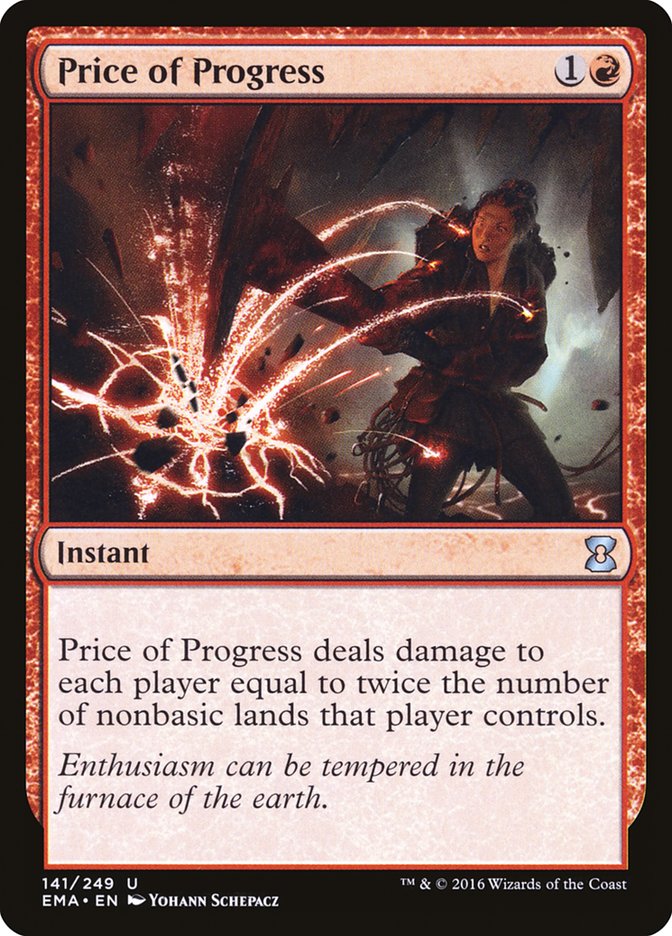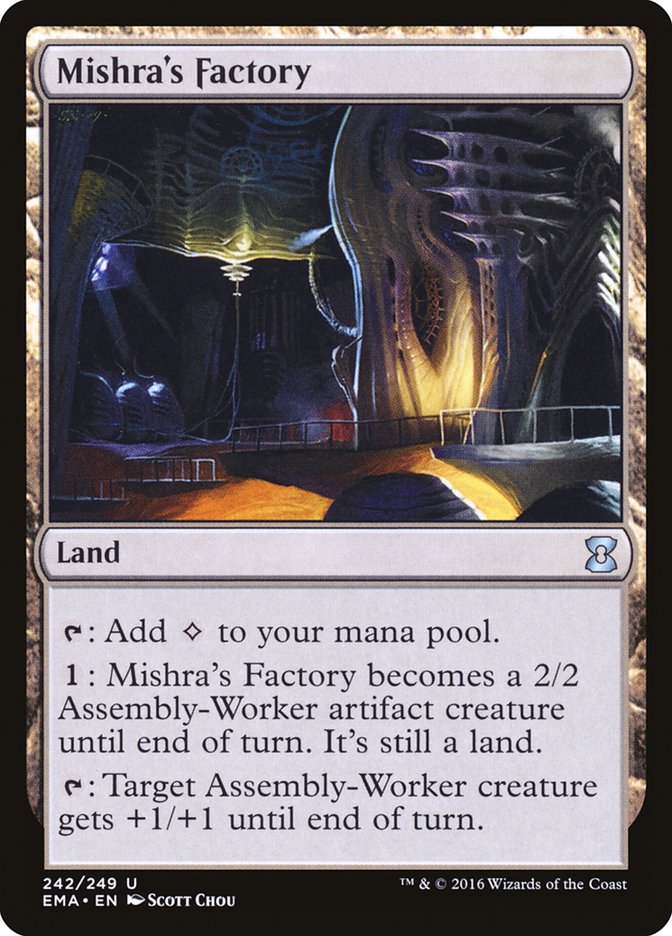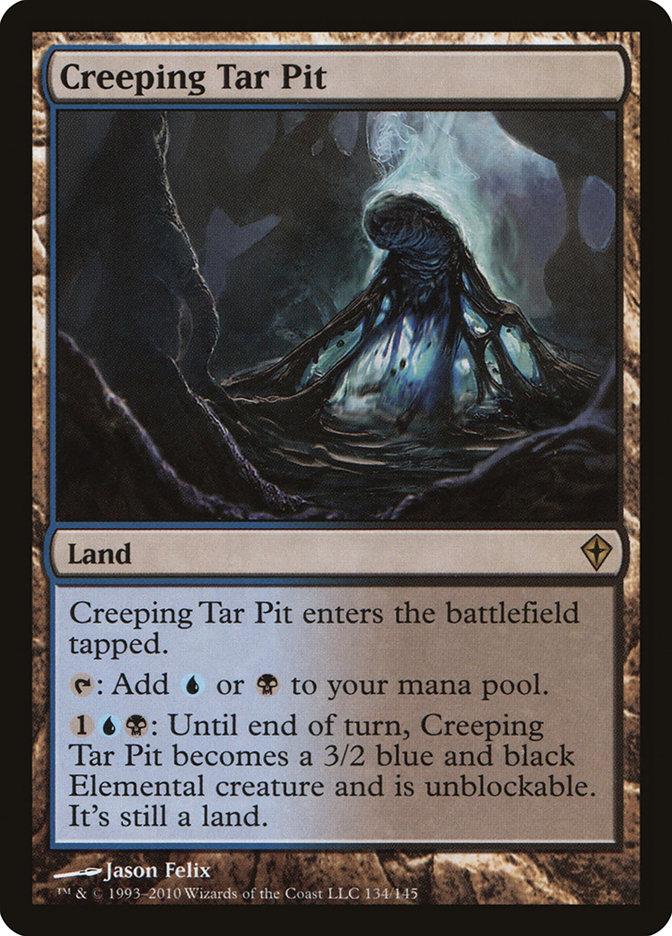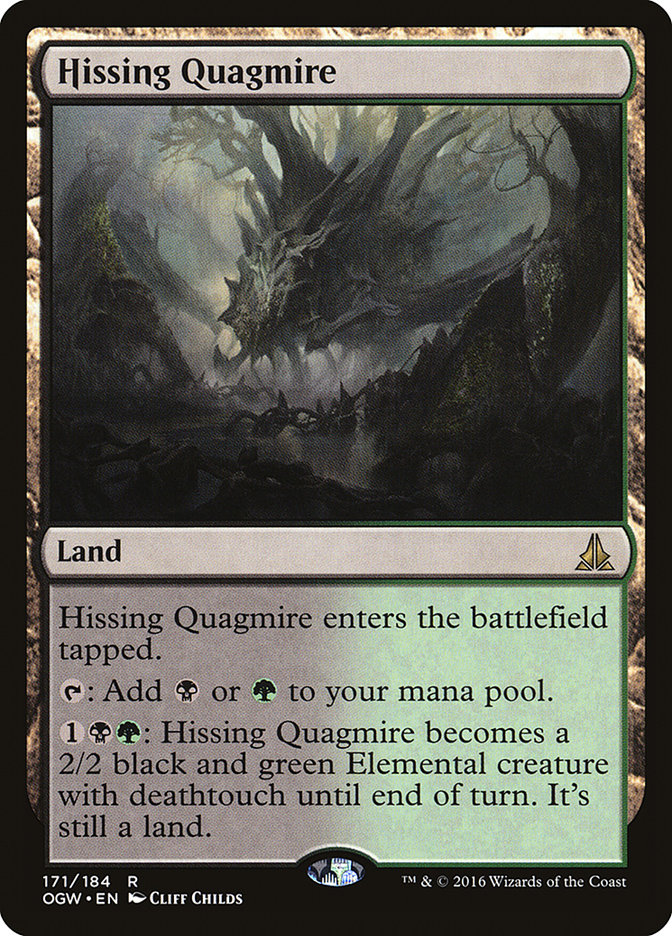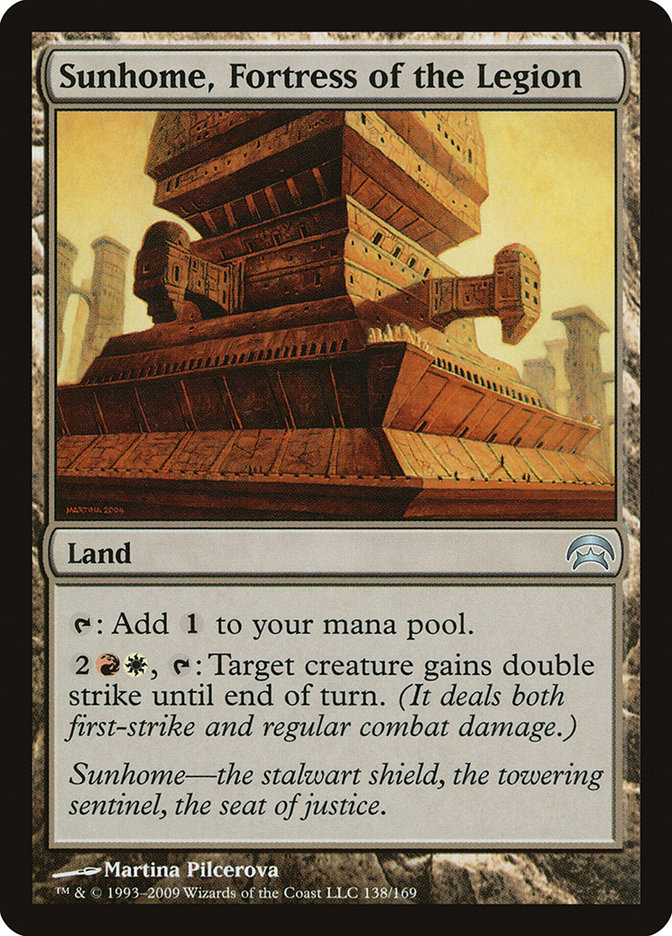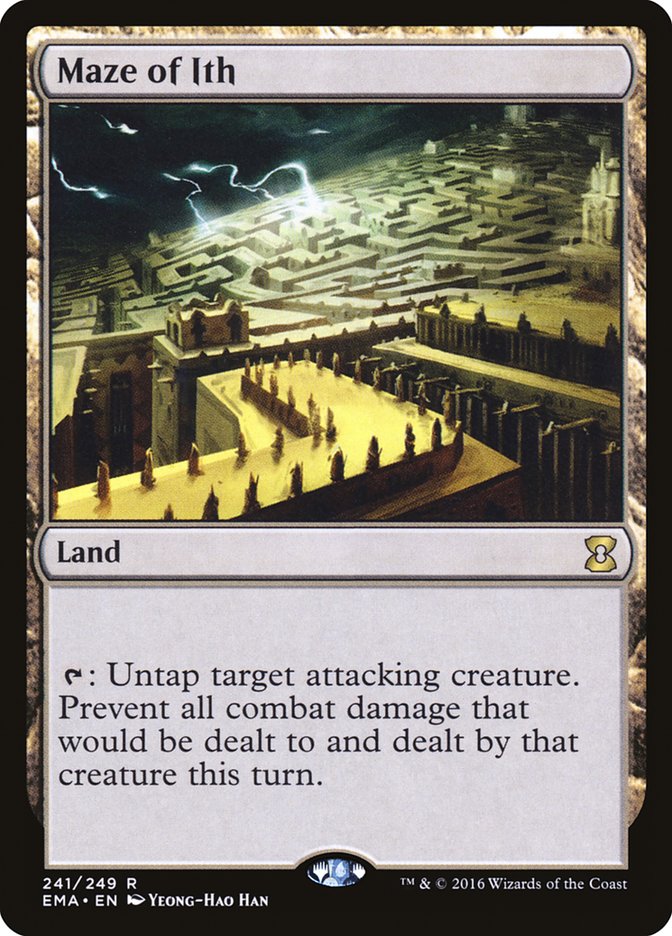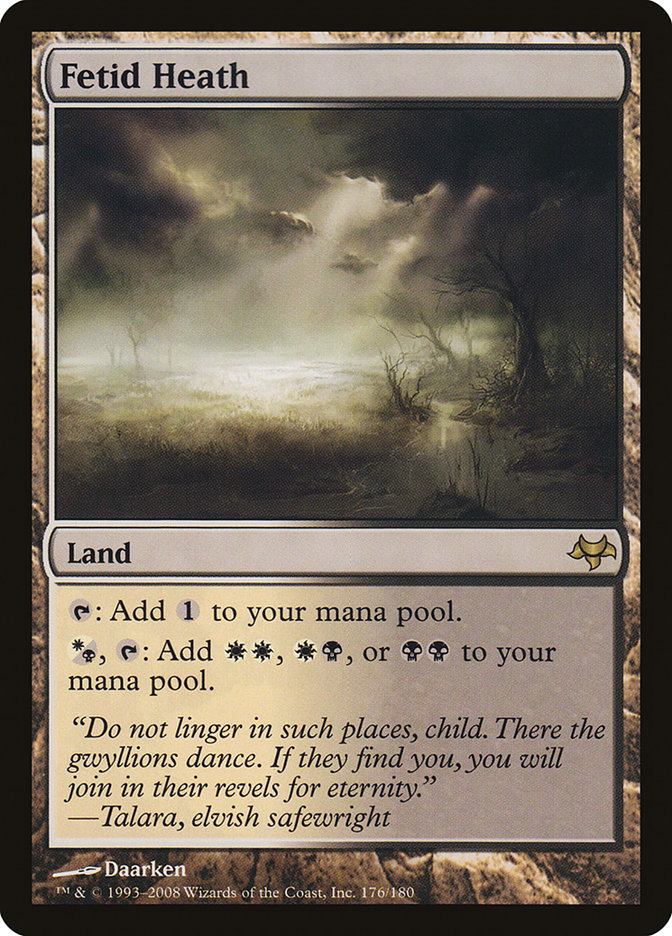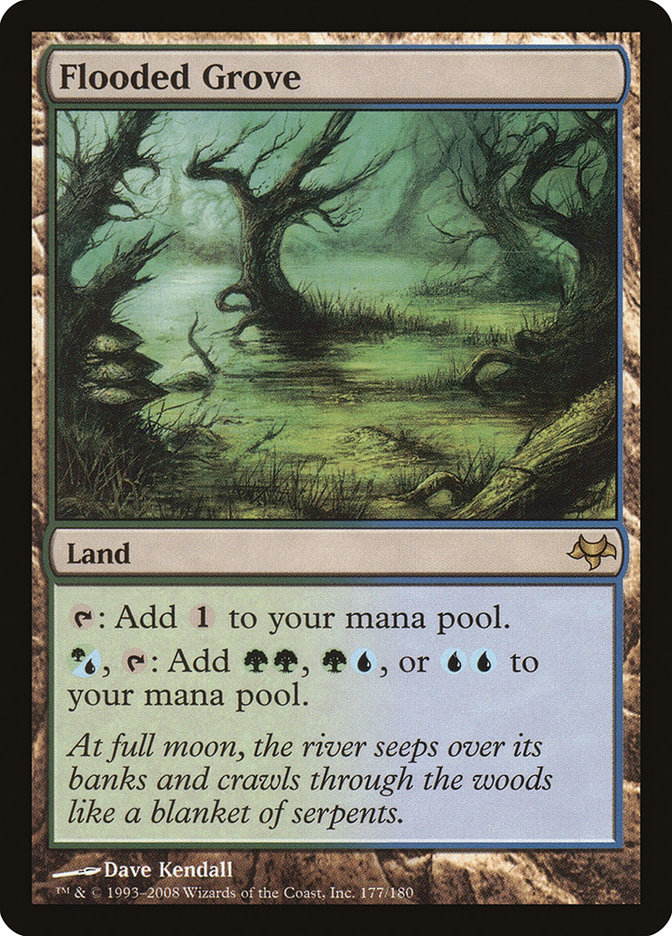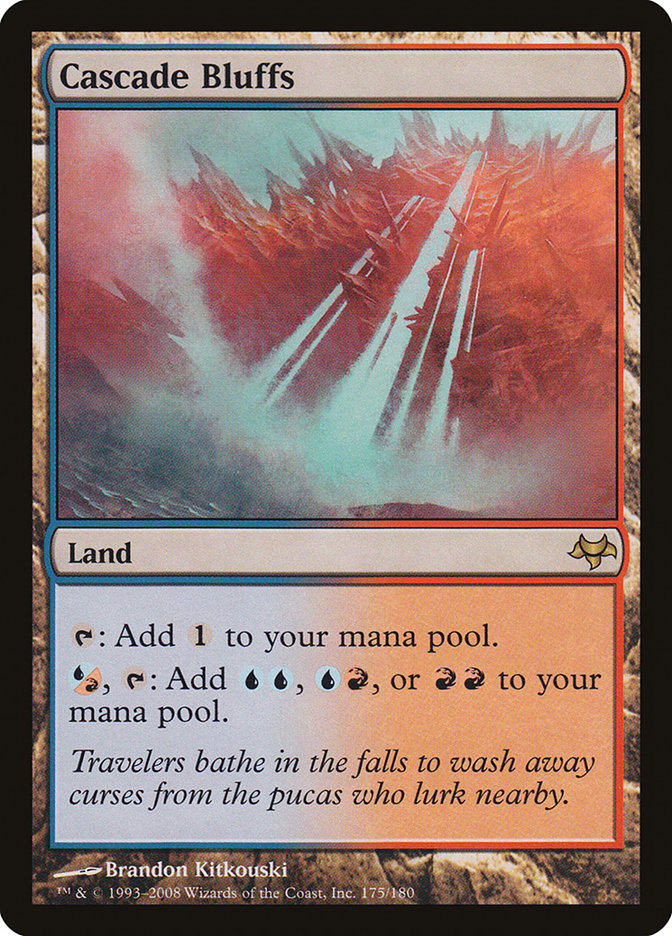Manabases are the most underrated part of most decks. When another player asks for deck advice, they want help with “sweet tech” or upgrades for various pieces of the deck. But many decks can be improved by going back to the base of the deck. If a building has a poor foundation, it will sag or crack over time. You can repair things, but the foundation of the building will never be as it should. Manabases work the same way.
Last week, Emma Handy was talking about the Standard rotation and said: “Decks are only as good as the consistency of their mana, and without anything to fill the void of tri-lands that the painlands are, it’s hard to imagine decks that are anything more than two types of mana (encompassing both colors and colorless).” We don’t often need to worry about the colorless mana needs, but the first part of her statement is golden for our purposes. Having the best end-game in the world doesn’t matter much if you can never cast the spells you need on time.
Maslow’s Hierarchy of Needs
Psychology has a concept of understanding the motivations for things without reward. This idea is most famously explained using Maslow’s hierarchy of needs. The desire and needs that people have operate in a pyramid. In this structure, biological and physiological needs are the base. Safety needs are the next layer of the pyramid. If those needs are met, people seek to meet their needs for belongingness and love, then esteem needs are sought. Finally people work towards self-actualization.
Deckbuilding follows a similar structure. Our mana is the base we build our decks upon. When we play games and are behind on mana or are starving for a specific color, our highest priority becomes finding a land or getting the color of mana we need. We change lines of play and our tactics to draw more cards or dig for our missing mana another way. Few things are as frustrating as losing a game where you held a winning card in hand but couldn’t get the mana to cast it, like having eight mana available but only two of it red, keeping you from casting Insurrection.
Number of Lands
One of the biggest mistakes I see players make is shaving lands. Players new to Magic will cut lands until they only have nineteen, yet they still try to cast Shivan Dragon in a timely manner. Players new to Commander make the same mistake.
Even experienced players are tempted to shave lands. The old standby of “24 lands in a 60-card deck” means that you want 40% of your deck to be lands. Adding two lands to a Standard deck for a deck that needs mana and cannot afford to miss land drops doesn’t seem like a big deal; it only bumps the number to 43.3% percent of the deck. Many players significantly underestimate the amount of mana Commander requires or how inconsistent a deck can be with trimmed mana.
Don’t fret about all the wasted slots going to lands. Many players hover around 38-40 lands. Some will cut down to 37, but be careful. If you start trimming lands, you need to adjust your deck. The Burn deck that plays only twenty lands? The curve ends at two mana. Commander doesn’t run curves that low. Unless you are doing a Tiny Leaders-style Commander deck. Then you can shave lands. Only then.
If you worry about flooding, I would just add a couple of mana sinks. Variance is still a thing, and flooding will happen. But I would rather flood on mana and just need to draw a business spell and know I can cast it compared to being mana screwed and needing to draw the right number of lands.
Adding some creatures like Trench Wurm or Azure Mage can do a lot of work to help you battle flooding. Jade Mage is another excellent mana sink. Don’t forget that many commanders have abilities that up the deck’s mana needs. Kaseto, Orochi Archmage may run a lower curve and yet need more mana because of the mana being used to boost sneaky Snakes.
Mana Fixing
For Commander games, one land stands out in an impressive way: Command Tower. It breaks almost all the rules lands have. One rule is that a land cannot be better than a basic land. In a two-color deck, Command Tower is like a dual land that cannot be fetched for. In a three-color deck, it is an untapped tri-land. If the deck has five colors, it is a painless City of Brass.
If your deck is multiple colors, you should probably run Command Tower to aid your mana. But do not be that player and run Command Tower in a mono-color deck.
With Command Tower excluded, every color-fixing land has a cost. Tundra and friends enter untapped, make two colors, can be fetched, and have no in-game cost; however, these are the most (real-life budget) expensive lands for Commander. The good news is that you do not need them. They will certainly improve a deck, but you are more than able to make decks that do not use the original dual lands.
Other lands that are excellent for fixing mana require a payment in life. The best are the Ravnica: City of Guilds block shocklands. These were reprinted in Return to Ravnica block, which keeps their cost from being too expensive. Paying two life for the land to enter untapped is a really easy cost for Commander.
An older example for paying life is the painlands from Ice Age and Apocalypse. The Ice Age painlands are the allied cycle, which has seen a great many printings. The good news is that you can easily get a cheap painland. The bad news is that many of the cheap ones have white borders. The Apocalypse enemy colored painlands have fewer printings, but more are black-bordered.
You are likely to take more damage from a painland than from a shockland, but you only need to take the damage when you really need it. Be careful: if someone has a damage doubler like Furnace of Rath out, you will take two damage every time you need a color from a painland. This damage applies to City of Brass as well.
Three- and five-color decks, and four-color decks after November and Commander 2016, are where you want to run City of Brass. Most two-color decks can use other lands and not take the excessive damage from an early City. Mana Confluence is like City of Brass, except better. You don’t take damage from tapping it if Chromatic Lantern, Prismatic Omen, or Urborg, Tomb of Yawgmoth is out. City of Brass still pings you.
The other option is time. There are many lands that will fix colors for a cost in time: they enter the battlefield tapped. Commander players are fortunate: they can use all the lands that have an upside to balance out entering tapped. Scry 1 is a nice effect provide by the Theros block Temples, and the Zendikar Refuges give one life. Khans of Tarkir provided functional reprints for the ally colors and the missing link for the enemy-colored pairs.
Underappreciated Mana
Some lands are underappreciated, basic lands in particular. Basic lands “do nothing.” They are simple, they don’t fix colors too well, and they have no upside. At least, that is the argument. That argument is wrong. Basic lands are the safest permanent in Magic, doubly so in Commander. Mass land destruction is typically frowned upon, but players will still punish greedy manabases. Ruination, Blood Moon, Magus of the Moon, Wave of Vitriol, Back to Basics, Trench Wurm, Fulminator Mage, Price of Progress, and more hurt nonbasic lands.
It often makes sense to cut basic lands for mana fixing, but be careful. Anathemancer is a popular card to punish players and Price of Progress is easy to get. I have seen an Oloro, Ageless Ascetic player go from almost 30 life to dead off a Price of Progress because the deck only had four basics.
The other benefit of basic lands is how they can be found easily and have support. Fetchlands, most green ramp, Pilgrim’s Eye and Solemn Simulacrum, and Liliana of the Dark Realms care about basic lands. The domain mechanic also cares about the basic lands. Run basics. They never let you down.
Creature-lands (“critter-lands” makes me giggle, so I use that term) are vastly underrated in Commander. Many games go to attrition, and the critter-lands excel in attrition scenarios. They dodge sorcery-speed removal, including almost every sweeper in the format. In decks with Equipment, it is worth running a couple just for times when things are grim. They do enter the battlefield tapped, but the little tempo loss is easily overcome later. Two-color critter-lands can also aid in mana fixing, as if they didn’t have enough value before. Creeping Tar Pit deserves special mention because it is an effective planeswalker killer. Hissing Quagmire functions like a rattlesnake to keep opponents away. Deathtouch should not be underrated.
The last critter-lands I want to note are Mishra’s Factory and Mutavault. These lands are very easy to fit into most decks that want the effect. When a Voltron commander like Godo, Bandit Warlord is attacking, Mutavault is a Samurai to attack again. When Godo is prohibitive to cast and you have Equipment doing nothing, Mutavault and Mishra’s Factory ask for only a single mana to animate. This makes piling on Equipment much easier than giving them to Celestial Colonnade or Raging Ravine.
“Ability lands” are another underrated part of Commander. Players use them, so they aren’t underappreciated in deckbuilding, but they are underappreciated when your opponents evaluate the battlefield.
I have won far, far too many games with Sunhome, Fortress of the Legion or Vault of the Archangel after activating it multiple times. My opponents forgot they existed from turn to turn. The lands with abilities like these are amazing for Commander. There are always more effects that you want to run than you have room for in your deck. The lands with abilities help make a compromise for deck slots.
The “spell lands” like Bojuka Bog fit in here as well. They enter the battlefield tapped and have an effect upon entering. The effect is only virtually free, though. Bojuka Bog and Halimar Depths both effectively cost a single mana, as if they tap themselves the turn they enter the battlefield for the effect.
A friendly reminder: Maze of Ith does not make mana. It takes a land drop but it does not produce mana. Don’t make a huge misplay because you count your mana incorrectly and show off that you have a card that cannot be cast.
For lands with effects, there are two things to remember. The first is to adjust your manabase to make sure you support the required colors properly. A Mardu deck with Sunhome, Fortress of the Legion; Slayer’s Stronghold; and Flamekin Village will want to make sure the red and white sources are capable of activating those lands frequently. I’ve seen too many players hamstring their decks because they didn’t consider the land mana requirements for their deck.
The second thing to consider is keeping the battlefield clear. You can organize your lands however you like, but I highly recommend you keep your lands with effects clearly visible. I tend to stack my dual lands, basic lands, and lands with effects in three stacks so that I can easily display any tricks or things I can do to impact the battlefield. I do not support hiding something like Maze of Ith under a pile of Forests for the “surprise factor.” At that point you are not properly representing your battlefield. Don’t be a jerk.
Filter Lands
The filter lands are massively underutilized in Commander. These lands are absolutely amazing. Many Commander decks run a lot of cards with two color requirements. A dual land is excellent mana fixing, but a three-color deck that plays Bayou and then Flooded Grove can cast Counterspell on turn 2 and have Dissipate available on turn 3 after playing a Swamp.
The filter lands allow you to cast a spell requiring two mana of one color off a single land. This cannot be underestimated when you absolutely need to cast a Wrath of God but do not have a single white source. The drawback is that these lands are not nearly as good on turn 1.
The filter lands are not terribly expensive but are usually off-budget options. If you want to make your deck better, save up for the filter lands. Few other lands will improve a deck as handily.
Making Mana Your Own
Despite all this advice, don’t ever feel locked into certain cards. Commander has every door open for deckbuilding; we should take advantage of that. Do you have a pet land? Run it where you can! And do not neglect nonland sources of mana. I love mana rocks that do things. Chromatic Lantern is amazing in decks with three or more colors. Mind Stone and its bigger siblings turn into cards later. Pyromancer’s Goggles can get you extra spells. Kaladesh has Cultivator’s Caravan, which looks fantastic. It’s a mana rock when you need and later on it allows utility creatures to Crew a five-power attacker.
Don’t go overboard with mana fixing at the expense of basic lands and fun cards. As you include more pet cards and off-the-wall cards, you are much more likely to catch your opponents by surprise, like with a 0/1 Goat token that can suddenly attack for lethal damage.
What lands do you favor? How important is your manabase? What are your thoughts on mana rocks versus mana creatures in Commander?


